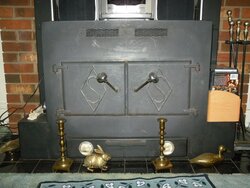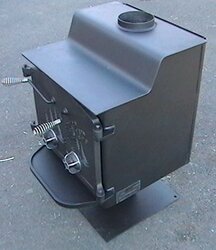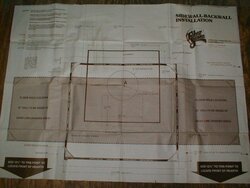Hi to all,
I have been given this wood heater but I do not know anything about it.
Can anyone identify this wood stove for me as far as who makes it or even
possibly a model number. It is being used as an fireplace insert righ now
but I would like to use it a a free standing wood heater in my doublewide
mobile if at all possible.
Thanks for any and all help and advice with this.
I have been given this wood heater but I do not know anything about it.
Can anyone identify this wood stove for me as far as who makes it or even
possibly a model number. It is being used as an fireplace insert righ now
but I would like to use it a a free standing wood heater in my doublewide
mobile if at all possible.
Thanks for any and all help and advice with this.




